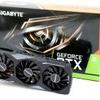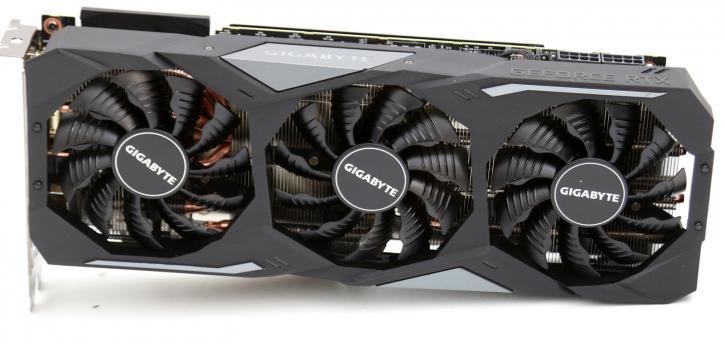Conclusion
Conclusion
The GeForce RTX 2080 Ti launch has been rough. It's not that people won't like Raytracing and AI features like DLSS, no Sir. The problem is its price level as at 1200 bucks these cards are darn hard to justify seen from say the 1080 Ti. There are also issues with the launch availability and the problem that NVIDIA made the call to do it all at once, RTX 2070, 2080, 2080 Ti and on top of that a gazillion AIB card. All these facts combined probably made this one of the worst launches ever from NVIDIA. However, in these conclusions, we do need to step away from that conundrum that is haunting the RTX launch, as today we need to focus on the AIB product and what it brings to the table.
DX-R gaming and DLSS
So yes, I would have loved to show you some DXR (Raytracing) performance, but all that NVIDIA provided was an internal Star Wars Reflection demo you've probably already seen, which is lovely to see! but simply is irrelevant of course to benchmark. Also, very cool that UL contacted us and allowed us to test and showcase where they are at with the Raytracing demo. You have seen an exclusive there, work in progress though! So yeah, that's it for Raytracing for now. Once we actually see games release them and once Microsoft releases DX-R (fall update) we'll create some additional content to show you the potential of the new RT cores as really, this release is all about the RT cores my jolly good friends. So I am not dismissing the RT cores here, as honestly, I am super excited about the technology and what it can do for image quality in gaming. It's just that I objectively cannot comment or give you an advise based on something we cannot test in an actual game (which what this is all about eh?). That other feature then, Deep learning Supersampling. Totally lovely, really .. but here again we've been dealing with the fact that there is no software to test aside from precisely two titles, you've seen the results and image quality in this article with the help of Ultra HD videos. I'll say this though, despite we've only been able to visually inspect and measure one title, we are impressed by the technology as when you use DLSS, you don't need to enable AA in your shader engine anymore as DLSS takes care of that for you by using the Tensor cores, so that's completely offloaded and that brings in a good chunk of additional performance in return, that you'd normally miss out on. The technology in its current state, I can confirm that it is impressive. And with that out of the way, I need to close the primary new features and that DNA that is RTX and AI already and turn back to traditional rasterized shading. More relevant would be the EPIC infiltrator DLSS demo I showed you? I meant that's really good right? Plus it just runs much faster compared to TAA, that's win-win right there.
Gaming performance
The RTX 2080 Ti is offering great performance overall. We're seeing some caps at lower resolution gaming, but for Ultra HD, the next step in performance has been made. Depending on title and workload you'll see 25% to maybe even 40% performance increases in this specific resolution. The RTX 2080 Ti really starts to flex muscle at or after a resolution of 2560x1440, anything below is normalized due to driver and processor bottlenecks. We cannot think of a game that won't run really good combined with the best image quality settings. The more difficult you make it on this card, the better it'll perform compared to last-gen products. Gaming you must do with at least a 24" monitor of course, at 2560x1440/1600 or better would be a nice fit. The 11 GB graphics memory is excellent, making the product very future proof. In terms of multi-GPU setups, Turing will support 2-way SLI, but really that's it and all. NVIDIA did not have the new NVLINK connector available, so we've not been able to test it.
Aesthetics
Gigabyte altered the looks and basically revamped the 82mm fan based WindForce 3X model cooler, combined with its black design it certainly looks good, but I liked the Aorus look better. My biggest fear for Gigabyte is that when people need to chunk out 1200 bucks, you expect something exquisite. And the reality is that albeit this is a fine looking card, it does seem to be a little plain in looks. And that fact alone contradicts with the price-tag. We expect that the Aorus version will do much better.
Cooling & Noise Levels
Really good. The card tops out at roughly 67 Degrees C while gaming and you need to keep in mind that this is a factory tweaked product with increased power limiter. So that's not bad at all, especially considering the nice acoustics as this puppy remains very silent. We measured a 38 DBa range which means you can hardly hear the product, this is considered silent. So yes I agree, this card might look a bit thicker due to adding radiator surface area, it, however, does cool the TU102 really well. We have not heard any noticeable col whine btw.
Power Consumption
Any TU102 Turing GPU and thus graphics cards based on them are rated at roughly 260 Watt TDP under full stress. We measured 269 Watts when gaming, which is fine of course. A 650 Watt PSU would be a nice match for these cards but 700 Watts probably is better to be on the safe side. Remember - when purchasing a PSU, aim to double up in Wattage as your PSU is most efficient when it is at 50% load. Here, again, keep in mind we measure peak power consumption, the average power consumption is a good notch lower depending on GPU utilization. Also, if you plan to overclock the CPU/memory and/or GPU with added voltage, please do purchase a power supply with enough reserve. People often underestimate it, but if you tweak all three aforementioned variables, you can easily add 150 Watts to your peak power consumption budget as increasing voltages and clocks increase your power consumption.
Overclocking
This is Gigabytes Gaming OC edition, literally that OC is in the SKU name, and its BIOS default is a whopping 15 Mhz over the founder's edition. That doesn't sit well with me. By applying the software tweak you get another 15 Mhz, but nobody is using that as each time you start up that system, you need to activate the software. manually tweaking was a little average as well, we reached a 5% performance increase with a soft 70 MHz tweaks on the base clock. The memory we dialed down slightly but at +800 (=1600 Mhz effective) we have the GDDR6 memory running at 15.600 MHz (effective data rate). With these settings, you'll hover at a ~1950MHz boost and have nice memory bandwidth, and that will increase your performance. But other cards did better.
Concluding
Gigabyte offers a very decent RTX 2080 Ti, however, compared to the competition it feels perhaps a little plain overall?, and for 1200 USD/EUR I would expect all bells and whistles I guess. The good news is that the upcoming Aorus cards look brilliant and likely will perform the same way. So where does that leave the Gaming OC edition? I dunno, it needs to be extremely priced competitive to make any real sense. Also, and Gigabyte I love you guys and girls, but when you name a product gaming OC and plant that OC label on the box and in the SKU name, then people really expect something more than a 15 MHz increase on the clock frequency. The result of that factory tweak is an overall 1 maybe 2 % performance increase. The cooling overall is good and is relatively silent, we have no issues to report there as well that it is slightly better than the reference cooler. You've seen the numbers, for Ultra HD gamers this product works out well, really well. In closing, we feel the Gigabyte RTX 2080 Ti Gaming OC is an enthusiast class product, that maybe could have looked a notch better. As stated, this card is pretty silent and does manage to do that at very nice cooling levels. You have seen the thermal images, these show good decent results as the card throughout all locations remains at relatively proper temps. If you can pick it up for the right price then we can wholeheartedly recommend it, but yeah well .. I think I said enough about that. Personally, I do believe that the end-users will like the Aorus card better, but here as well that price premium cannot be too high as people would simply not buy it. However once the Aorus is available, I think the gaming OC edition will be trumped by that card series, making the Gaming OC edition a harder to position graphics card. It's still a beast of a card though and as such is recommended.
Recommended Downloads
- Sign up to receive a notice when we publish a new article
- Or go back to Guru3D's front page



